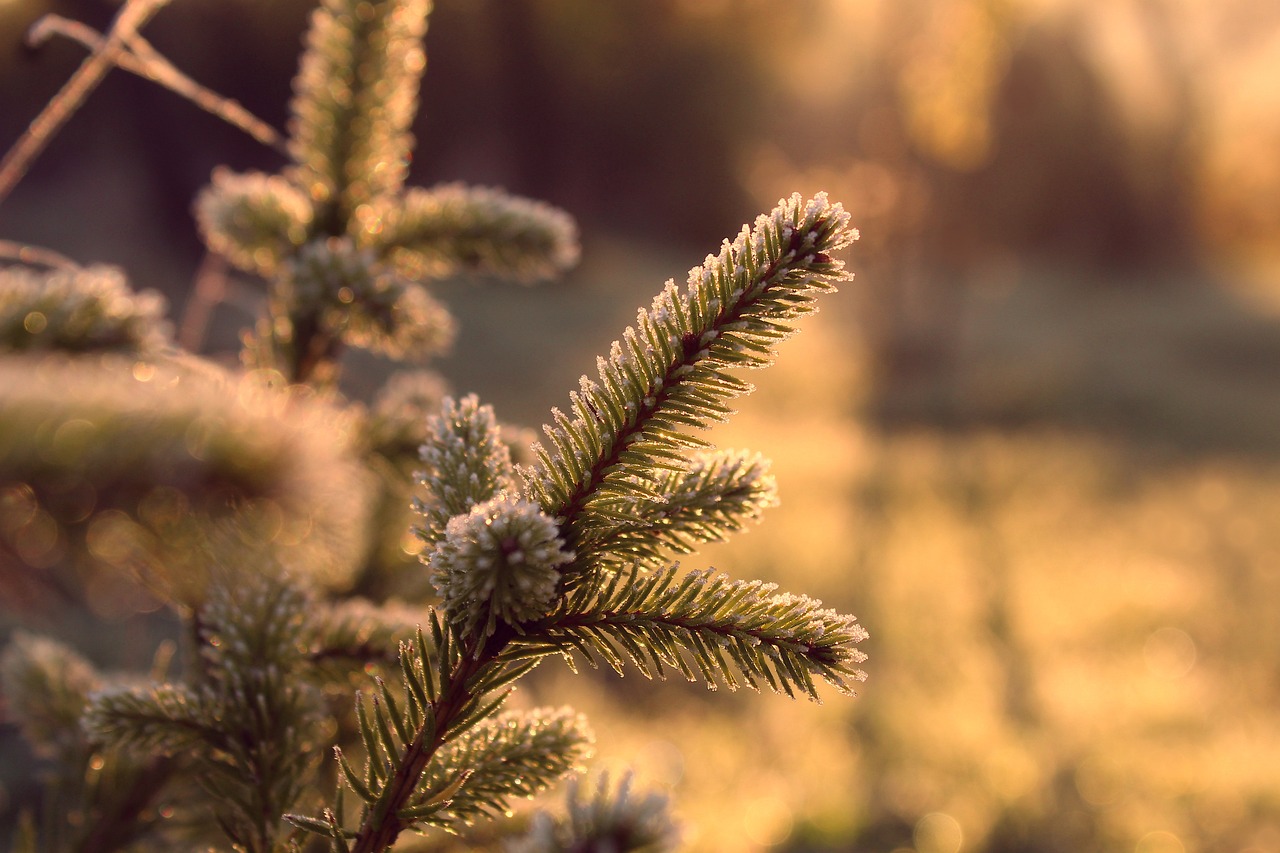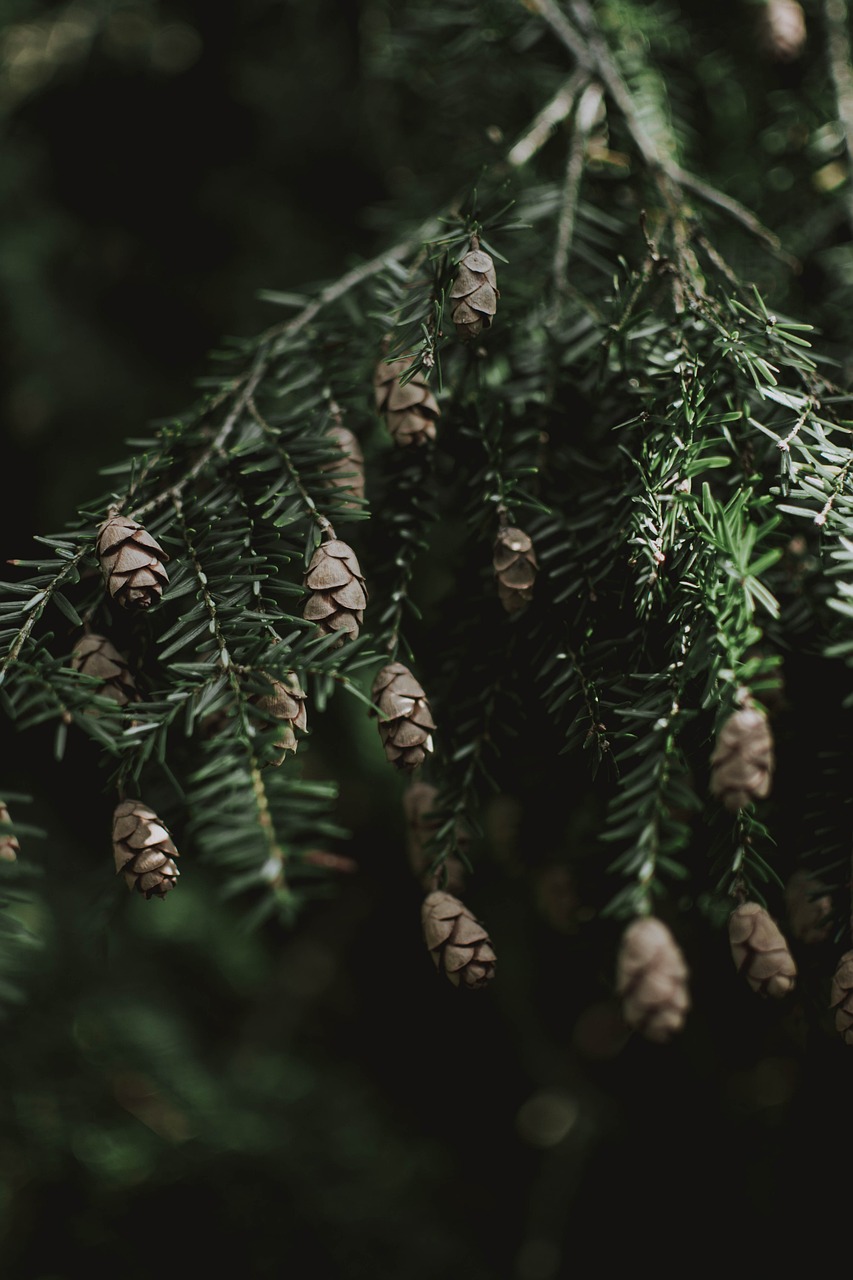Blue Spruce Disease Treatment: Effective Solutions to Save Your Trees
To effectively treat Blue Spruce diseases, it is crucial to identify the specific ailment affecting the tree. Common treatments include proper watering, applying fungicides, and maintaining optimal soil conditions. Early detection and intervention are key to saving these beautiful trees.
Blue Spruce trees, scientifically known as Picea pungens, are beloved for their striking blue needles and symmetrical shape. They are popular choices for landscaping due to their resilience and unique appearance. However, like all trees, they are susceptible to various diseases that can threaten their health and vitality.

Understanding the causes and symptoms of Blue Spruce diseases is essential for effective treatment. Many of these issues stem from fungal infections, pests, or environmental stressors. The most common diseases affecting Blue Spruce include needle cast, cankers, and root rot. Each of these diseases presents its own set of challenges and requires specific treatment methods.
Common Diseases Affecting Blue Spruce Trees
Before diving into treatment options, it is important to recognize the common diseases that can afflict Blue Spruce trees. The following table outlines some of the most prevalent diseases, their symptoms, and initial treatments.
| Disease | Symptoms | Treatment |
|---|---|---|
| Needle Cast | Yellowing and dropping of needles | Fungicide application and improving air circulation |
| Cankers | Sunken areas on the bark and dieback of branches | Pruning affected areas and applying fungicides |
| Root Rot | Wilting, yellowing foliage, and stunted growth | Improving drainage and using soil fungicides |
Identifying these symptoms early can make a significant difference in treatment outcomes. For instance, needle cast can often be treated effectively if caught in its early stages. This disease is caused primarily by fungal pathogens that thrive in wet conditions, making proper care essential.
Environmental Factors Contributing to Disease

Aside from biological factors, environmental conditions play a vital role in the health of Blue Spruce trees. Poor soil drainage, compacted roots, and insufficient sunlight can all contribute to vulnerability against diseases. Here are some major environmental factors to consider:
- Soil Quality: Well-draining soil is vital for Blue Spruce health. Compacted or poorly drained soils can lead to root issues.
- Watering Practices: Overwatering or underwatering can stress trees, making them more susceptible to diseases.
- Sunlight Exposure: Ensure that your Blue Spruce receives adequate sunlight as lack of light can weaken the tree.
Regular monitoring and maintenance can help mitigate these environmental impacts. For example, ensuring adequate drainage around the tree’s root zone can significantly reduce the risk of root rot.
Preventive Measures for Healthy Trees

Prevention is always better than cure when it comes to maintaining healthy Blue Spruce trees. Implementing good cultural practices can greatly reduce the risk of disease. Here are some effective preventive measures:
- Regularly inspect your trees for any signs of disease.
- Maintain proper watering schedules based on seasonal needs.
- Prune away dead or diseased branches promptly.
- Avoid overcrowding by ensuring adequate spacing between trees.
- Use mulch to retain soil moisture while preventing weeds.
By adhering to these preventive measures, you can help ensure your Blue Spruce trees remain healthy and vibrant for years to come. Proper care not only enhances their appearance but also fortifies them against potential threats from diseases and pests.
In conclusion, understanding Blue Spruce disease treatment involves recognizing common ailments and implementing effective preventive strategies. The next sections will delve deeper into specific treatments and solutions tailored for various diseases affecting these majestic trees.
Identifying Symptoms of Blue Spruce Diseases
Recognizing the signs of disease in Blue Spruce trees is crucial for timely intervention. Early detection can significantly improve the chances of successful treatment. Here are some common symptoms to watch for:
- Discoloration of Needles: Look for yellowing or browning of needles, which can be a sign of needle cast or nutrient deficiencies.
- Needle Drop: If you notice an unusual amount of needle drop, especially during the growing season, it may indicate a fungal infection.
- Wilting: Wilting foliage is often a sign of root rot or insufficient water supply.
- Visible Cankers: Sunken areas on the bark, often with oozing sap, suggest the presence of cankers.
- Stunted Growth: Trees that fail to grow adequately may be suffering from various underlying health issues.
Being vigilant and observing these symptoms can help you take proactive steps to treat your Blue Spruce trees effectively. If any of these signs appear, it is essential to investigate further to determine the appropriate treatment options.
Common Treatment Options for Blue Spruce Diseases
Once a disease is identified, implementing the correct treatment is vital. Various approaches can be taken depending on the specific ailment affecting the tree. Below are some common treatments for Blue Spruce diseases:
Fungicides
Fungicides are often the first line of defense against fungal infections like needle cast and cankers. When using fungicides, consider the following:
- Type of Fungicide: Select a fungicide that targets the specific pathogen affecting your tree. Consult with a local nursery or extension office for recommendations.
- Application Timing: Apply fungicides during the early stages of disease development for maximum effectiveness.
- Follow Instructions: Always adhere to the manufacturer’s guidelines regarding dosage and application frequency.
Pruning
Pruning is an essential treatment method that can help manage diseases affecting Blue Spruce trees. The following steps should be taken when pruning:
- Identify Affected Areas: Carefully examine the tree for dead, diseased, or overcrowded branches.
- Use Clean Tools: Always use sterilized pruning shears to prevent the spread of diseases.
- Make Clean Cuts: Cut branches at a 45-degree angle to promote healing and reduce moisture accumulation in cut areas.
- Dispose of Debris: Remove all pruned materials from the area to minimize disease spread.
Soil Management
The health of Blue Spruce trees starts from the ground up. Proper soil management is crucial for preventing diseases such as root rot. Consider these practices:
- Aeration: Aerate compacted soil to improve drainage and root health.
- Add Organic Matter: Incorporate compost or well-rotted manure into the soil to enhance its fertility and structure.
- Monitor pH Levels: Test soil pH regularly; Blue Spruce thrives in slightly acidic conditions (pH 6.0-7.0).
Pest Control Measures
Pests can also contribute to the decline of Blue Spruce trees. Common pests include spider mites, spruce budworms, and bark beetles. Here are some control measures:
Pesticides
If pests are identified, consider using insecticides specific to the pest type. Some important points include:
- Selective Insecticides: Choose insecticides that target specific pests while being safe for beneficial insects.
- Timing: Apply insecticides during peak pest activity for maximum effectiveness.
- Follow Instructions: Always follow application instructions carefully to minimize environmental impact.
Naturally Occurring Predators
Encouraging naturally occurring predators can be an effective way to manage pest populations without chemicals. Beneficial insects such as ladybugs and lacewings can help control aphid populations on Blue Spruce trees.

By understanding symptoms, treatment options, and pest control measures, you can create a comprehensive plan to protect your Blue Spruce trees. Regular monitoring and appropriate care will foster healthy growth and resilience against diseases and pests.
Advanced Treatments for Blue Spruce Diseases
In addition to basic treatments, advanced methods can provide effective solutions for more severe cases of Blue Spruce diseases. These methods often involve a combination of chemical, biological, and cultural practices tailored to the specific needs of the trees.
Systemic Treatments
Systemic treatments involve the application of chemicals that are absorbed by the tree and transported throughout its vascular system. This method is particularly useful for combating pests and diseases that are difficult to control through topical applications. Consider the following:
- Systemic Insecticides: These are effective against pests like bark beetles and aphids. They work by being taken up by the roots or foliage and affecting insects that feed on the tree.
- Fungicides: Certain fungicides can also be systemic, providing long-lasting protection against diseases like needle cast and root rot.
- Timing and Dosage: Follow the recommended timing and dosage for systemic treatments to ensure optimal results without harming the tree.
Biological Control Options
Biological control methods utilize natural organisms to combat pests and diseases. These methods can be effective and environmentally friendly alternatives to chemical treatments. Here are some options:
- Beneficial Nematodes: These microscopic worms can be introduced into the soil to target root-feeding pests, thereby promoting healthier roots.
- Mycorrhizal Fungi: Introducing mycorrhizal fungi can enhance nutrient uptake, improve soil health, and increase resilience against certain pathogens.
- Bacterial Inoculants: Certain bacteria can suppress pathogens in the soil, reducing the incidence of root rot and other diseases.
Soil and Foliar Applications
Incorporating soil and foliar applications into a treatment plan can significantly improve tree health. These applications deliver nutrients and protective agents directly to the tree’s system.
Soil Amendments
Amending the soil with organic materials can improve drainage, enhance nutrient availability, and promote beneficial microbial activity. Consider these amendments:
- Compost: Adding compost not only enriches soil but also helps retain moisture.
- Bone Meal: This organic amendment boosts phosphorus levels, which is essential for healthy root development.
- Peat Moss: Incorporating peat moss can improve soil structure and aeration.
Foliar Sprays
Foliar sprays can provide quick nutrient absorption and disease prevention directly through the leaves. Some recommendations include:
- Nutrient Solutions: Use balanced fertilizers in a liquid form to deliver essential nutrients directly to the foliage.
- Pesticidal Soaps: These can be effective against soft-bodied pests when applied directly to infested areas.
- Fungicide Sprays: Regular applications of preventative fungicides can help protect healthy trees from potential infections.
Monitoring and Maintenance Practices
Regular monitoring and maintenance are key components in managing the health of Blue Spruce trees. Implementing a consistent care routine can help identify issues before they escalate.
Regular Inspections
Establish a schedule for inspecting your trees for signs of disease or pest infestations. Consider these tips:
- Seasonal Checks: Perform inspections at least twice a year—once in spring and once in fall—to catch seasonal issues early.
- Look for Changes: Be alert for changes in foliage color, needle drop, or any unusual growth patterns.
- Document Findings: Keep a journal of your observations to track changes over time and inform future treatment decisions.
Cultural Practices
Cultural practices play an important role in maintaining tree health. Here are some effective strategies:
- Avoid Overwatering: Ensure that trees do not sit in waterlogged soil, as this can lead to root rot.
- Adequate Spacing: Maintain proper spacing between trees to improve airflow and reduce humidity levels around the foliage.
- Diverse Planting: Incorporate a mix of plant species in your landscaping to create a more resilient ecosystem.
This comprehensive approach allows you to effectively address diseases affecting Blue Spruce trees while promoting overall health and longevity. With consistent care and appropriate interventions, these majestic trees can thrive for generations to come.
Advanced Care Techniques for Blue Spruce Trees
In addition to the previously discussed treatments and preventive measures, there are advanced care techniques that can further enhance the health of your Blue Spruce trees. These practices focus on long-term tree vitality and resilience against diseases.
Mulching Practices
Applying mulch around the base of your Blue Spruce trees can provide numerous benefits. Consider the following advantages:
- Moisture Retention: Mulch helps retain soil moisture, which is crucial during dry spells.
- Weed Suppression: A layer of mulch prevents weed growth, which can compete for nutrients and water.
- Temperature Regulation: Mulch acts as an insulator, keeping soil temperatures stable throughout the seasons.
When applying mulch, use organic materials such as wood chips, bark, or straw. Ensure that the mulch layer is not piled against the trunk to prevent moisture buildup and potential rot.
Tree Fertilization
Proper fertilization is an essential component of maintaining healthy Blue Spruce trees. Here are some key points to consider when fertilizing:
- Soil Testing: Conduct a soil test to determine nutrient deficiencies before applying fertilizers.
- Balanced Fertilizers: Use a balanced fertilizer with equal parts nitrogen, phosphorus, and potassium to support overall tree health.
- Timing: Fertilize in early spring as new growth begins, allowing nutrients to support active growth.
Watering Techniques
Watering is crucial for the health of Blue Spruce trees. Here are some effective watering techniques:
- Deep Watering: Water deeply and infrequently to encourage deep root growth. This helps establish a strong root system that can access moisture further down.
- Drip Irrigation: Consider installing a drip irrigation system to deliver water directly to the roots while minimizing evaporation.
- Monitor Soil Moisture: Use a soil moisture meter to check when your trees need watering, ensuring you do not overwater or underwater.
Final Thoughts
In conclusion, the health and vitality of Blue Spruce trees depend on a multifaceted approach to care. Recognizing symptoms of disease early, employing effective treatment strategies, and maintaining ongoing cultural practices are vital for their longevity. By implementing advanced techniques such as mulching, proper fertilization, and effective watering methods, you can enhance the overall well-being of your Blue Spruce trees.
Remember that tree care is an ongoing process. Regular monitoring and adaptive management will ensure that your Blue Spruce trees remain robust and vibrant. Whether you are a seasoned gardener or a new homeowner looking to beautify your landscape, investing time and effort into proper tree care will pay off with lush, healthy trees that thrive for years to come.
Your commitment to understanding and addressing the needs of your Blue Spruce trees not only enhances your property’s aesthetic appeal but also contributes positively to local ecosystems. Together, with proper care and attention, we can ensure that these magnificent trees continue to grace our landscapes for generations ahead.
